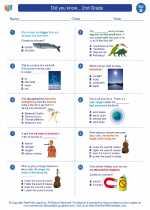Weather Patterns
Weather patterns refer to the recurring and predictable changes in atmospheric conditions that occur over time and in different regions. These patterns are influenced by various factors such as temperature, air pressure, humidity, wind, and the presence of water vapor in the atmosphere. Understanding weather patterns is essential for predicting and preparing for different weather conditions.
Factors Affecting Weather Patterns
Several factors influence weather patterns:
- Temperature: The amount of heat in the atmosphere affects air pressure and wind patterns.
- Air Pressure: Variances in air pressure lead to the formation of high and low-pressure systems, which in turn affect weather conditions.
- Humidity: The amount of water vapor in the air influences cloud formation and precipitation.
- Wind: Wind direction and speed play a critical role in determining weather patterns and can lead to the formation of storms.
- Presence of Water Vapor: The presence of water vapor in the atmosphere contributes to the formation of clouds and precipitation.
Types of Weather Patterns
Weather patterns can vary based on geographic location and time of year. Some common types of weather patterns include:
- Seasonal Patterns: Changes in weather that occur as the Earth orbits the sun, leading to variations in temperature and precipitation.
- Frontal Patterns: Weather changes that occur at the boundaries of different air masses, leading to the formation of fronts and associated weather conditions.
- Cyclical Patterns: Recurring weather phenomena such as El Niño and La Niña, which can impact global weather patterns over extended periods.
- Local Patterns: Weather conditions specific to a particular area, influenced by factors such as topography and proximity to large bodies of water.
Studying Weather Patterns
To understand and study weather patterns, it's important to:
- Observe and record daily weather conditions, including temperature, humidity, wind speed, and cloud cover.
- Analyze historical weather data to identify recurring patterns and trends.
- Use instruments such as barometers, thermometers, and anemometers to measure atmospheric conditions.
- Learn about different weather phenomena such as thunderstorms, hurricanes, and tornadoes to understand their impact on weather patterns.
- Utilize weather maps and satellite imagery to track and predict weather patterns on a regional and global scale.
By studying weather patterns, meteorologists and scientists can make more accurate weather forecasts and help communities prepare for potential weather-related hazards.
.◂Science Worksheets and Study Guides Second Grade. Did you know... 2nd Grade

 Worksheet/Answer key
Worksheet/Answer key
 Worksheet/Answer key
Worksheet/Answer key
 Worksheet/Answer key
Worksheet/Answer key
 Vocabulary/Answer key
Vocabulary/Answer key
